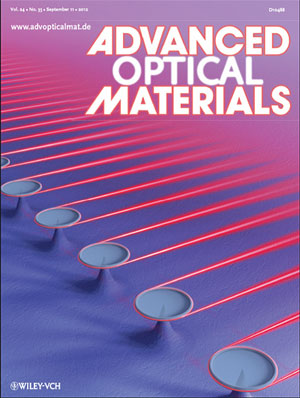Confinement and manipulation of photons using microcavitieshave triggered intense research interestin both basic and applied physics for more than one decade. Prominent examples are whispering gallery microcavities, which work like the famous whispering gallery in St. Paul’s Cathedral in London, where someone on the one side of the dome can hear a message spoken to the wall by someone on the other side. In the optical version of whispering gallery mode, the microcavity confines photons by means of continuous total internal reflection along a curved and smooth surface. The long photon lifetime, strong field confinement, and in-plane emission characteristics make them promising candidates for enhancing light-matter interactions on a chip, with various applications ranging from microlasing to optical biosensing. Unfortunately, it is hard to exploit the output power from traditional high-Q whispering gallery microcavities practically because the emission is isotropic due to the natural rotational symmetry.Animportant solution is to deform microcavities from rotational symmetry for providing directional emission, but such deformed cavitiesusually suffer from low Q factors in experiments when fabricated on a chip.
Recentlya teamled by Professor Yun-Feng Xiao and Professor Qihuang Gong at Peking University, with collaborators from University of Science and Technology of China and Washington University in St Louis,has experimentally reported a new type of on-chip whispering gallerymicrocavity which supported both highly unidirectional emission and ultrahigh-Q factors exceeding 100 million in near infrared.This ultrahigh Q factor is four-order-of-magnitude higher than previous chip-based deformed microcavities. The highly unidirectional emission results from the chaos-assisted tunneling, which represents a formalanalogue to the dynamical tunneling known as a purequantum mechanical phenomenon.

|
By doping erbium into the deformed microcavity, the Q factor is only limited by the erbium absorption, exceeding3 million. The lasing was observedin 1,550 nm band under free-space optical pumping withlasing threshold as low as 2 microwatts.This ultralow threshold is significantly beneficial toreduce the power consumption of the photonics devices. Furthermore, the resulting lasing emission is along a single direction with a narrow divergentangle about 10 degrees, which can be simply and efficiently collected by a lens.
In addition to a possible option forintegrated light source introduced here,this work opens a door to investigate various interesting phenomena in bothapplied photonics, not only the ultralow threshold lasing demonstrated here, but also single-photon source and nonlinear optics, and fundamental physics, such as strong light-matter interaction using a chip-scale ultrahigh-Q microcavity via convenient free-space coupling method.
Highly unidirectional emission and ultralow-threshold lasing from on-chip ultrahigh-Q microcavities Xue-Feng Jiang, Yun-Feng Xiao*, Chang-Ling Zou, Lina He, Chun-Hua Dong, Bei-Bei Li, Yan Li, Fang-Wen Sun, Lan Yang, and Qihuang Gong*, Advanced Materials 24, OP260-OP264 (2012).
Email address:yfxiao@pku.edu.cn;qhgong@pku.edu.cn
